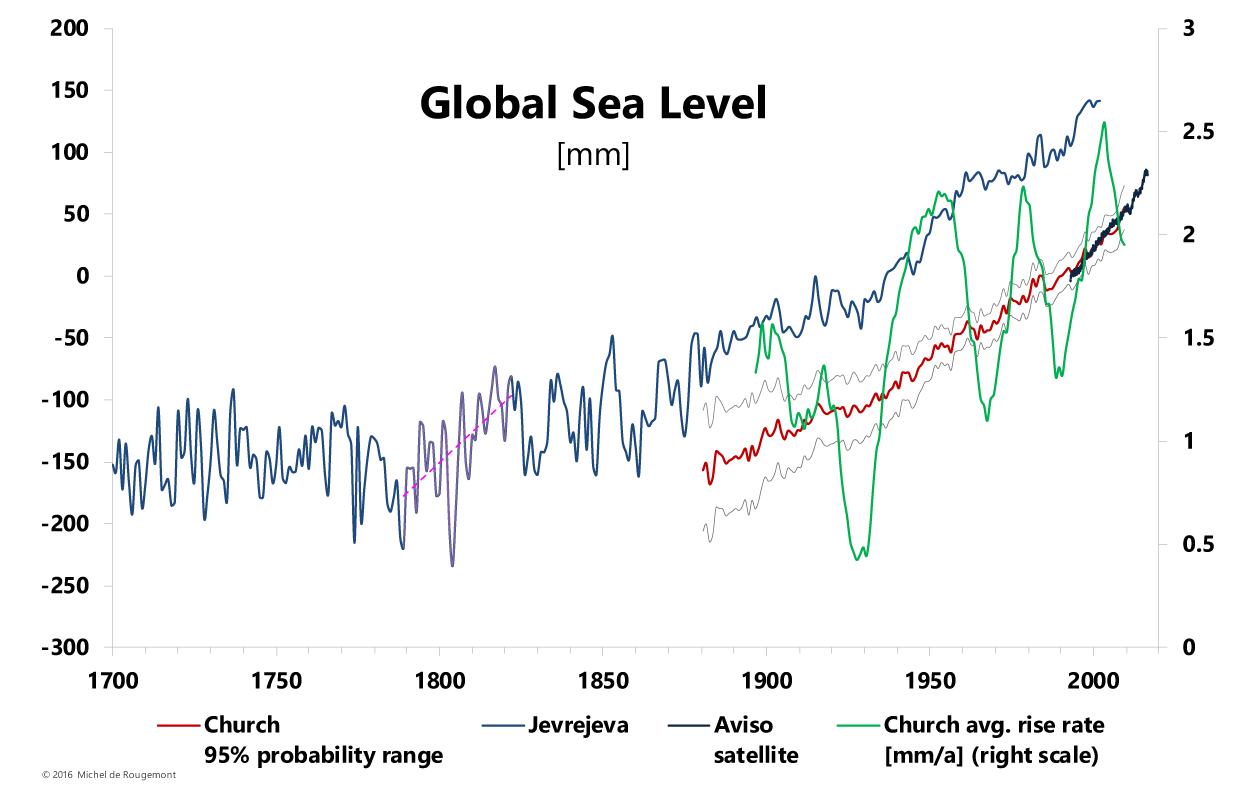Considering that the total amount of water on earth is almost constant, seas and oceans contain all water that is not in the atmosphere, in form of ice sheet or glaciers, kept in lakes, streams and in the ground, or retained by flora and fauna.
At the last glacial maximum, about 21’000 years ago, it is estimated that the sea level was approx. 130 meter lower than it is today.
The hypothetical melting of the ice sheets of the Antarctic and of Greenland would imply a further rise of approx. 82 meter. So far are we not, since the current ice loss of these two land masses corresponds to a sea level rise of 0.9 mm/a.
Other factors influencing the change of sea level is its thermal dilatation due to temperature change, and the changes of the volume of ocean basins due to geological shifts and deposits of sediments.

Global average sea level.
Source: John A. Church, Neil J. White, “Sea-Level Rise from the Late 19th to the Early 21st Century”, Surveys in Geophysics, Volume 32, Issue 4-5 , pp 585-602
and Jevrejeva, S., J. C. Moore, A. Grinsted, and P. L. Woodworth, "Recent global sea level acceleration started over 200 years ago?" (2008), Geophys. Res. Lett., 35
The rise rate is fluctuating in a multi-decadal way (green line on the preceding graph), similar to the Atlantic oscillations.
It should be noted that the seal level seems to have begun to increase as early as the end of the 18th century, in line with the end of the Little Ice Age, with no noticeable acceleration since.


